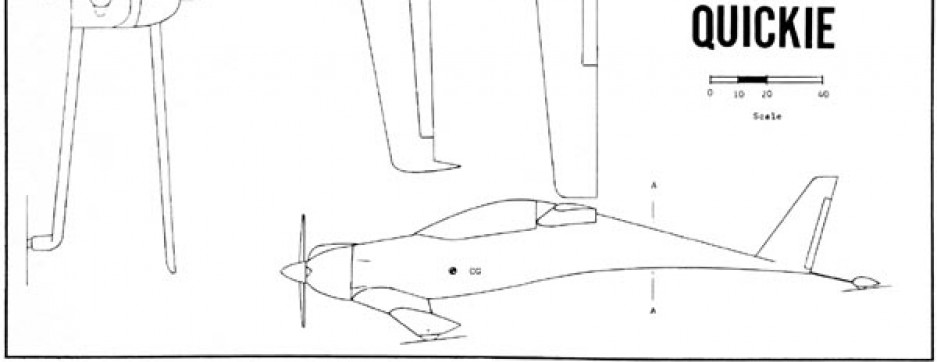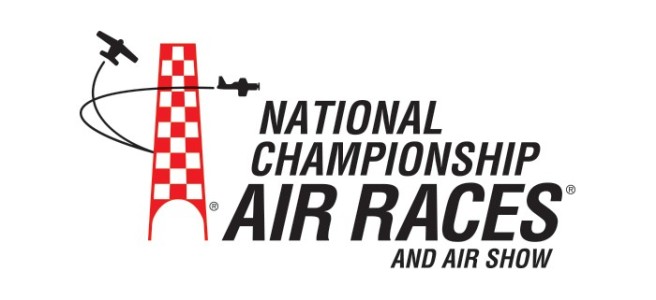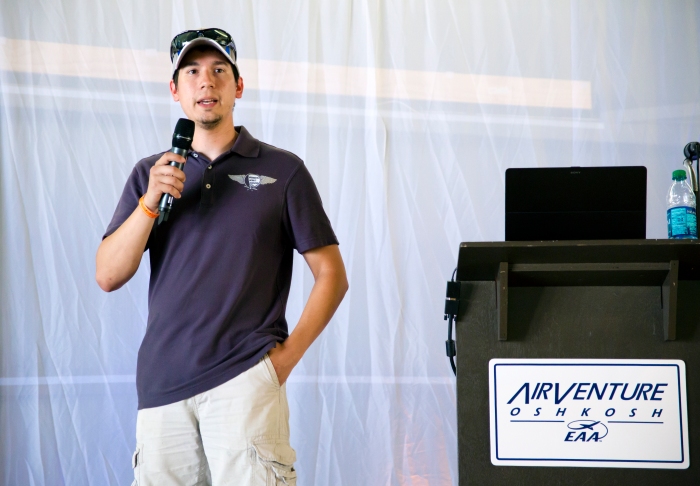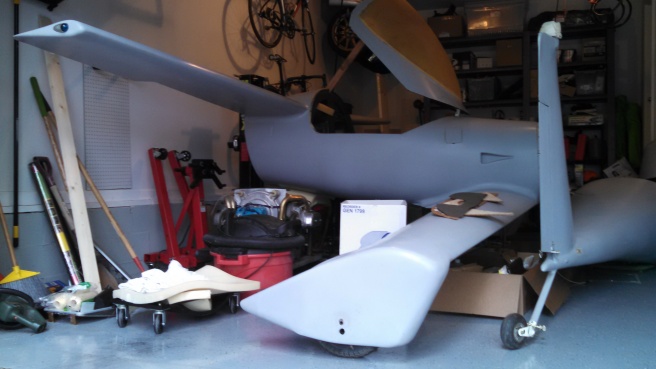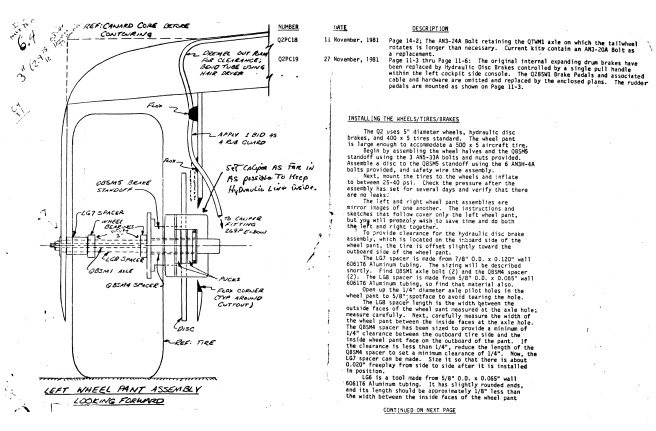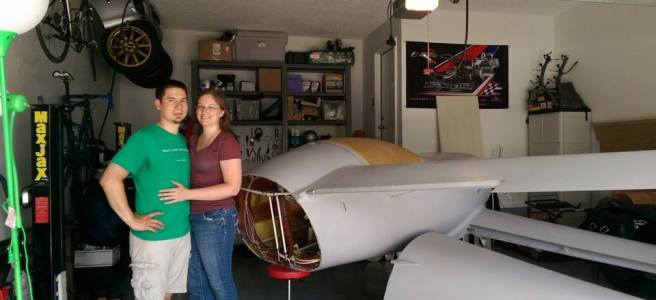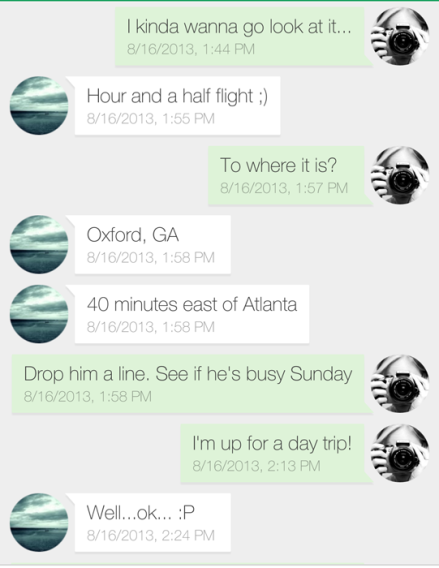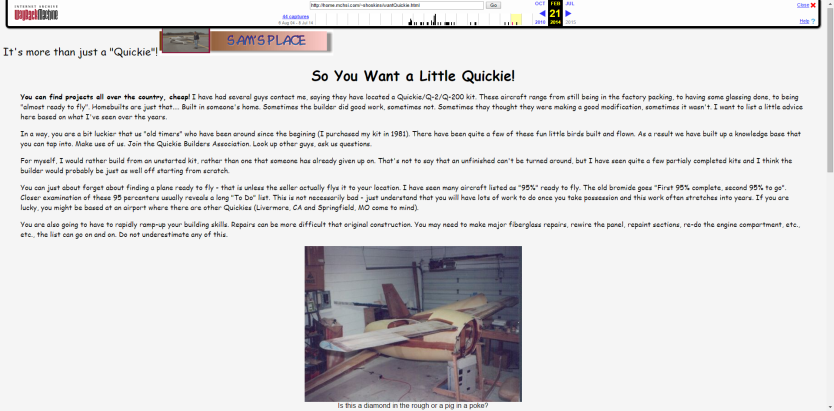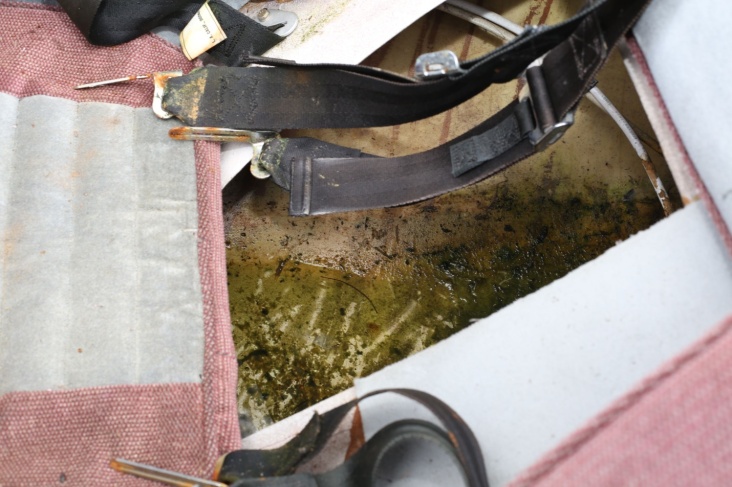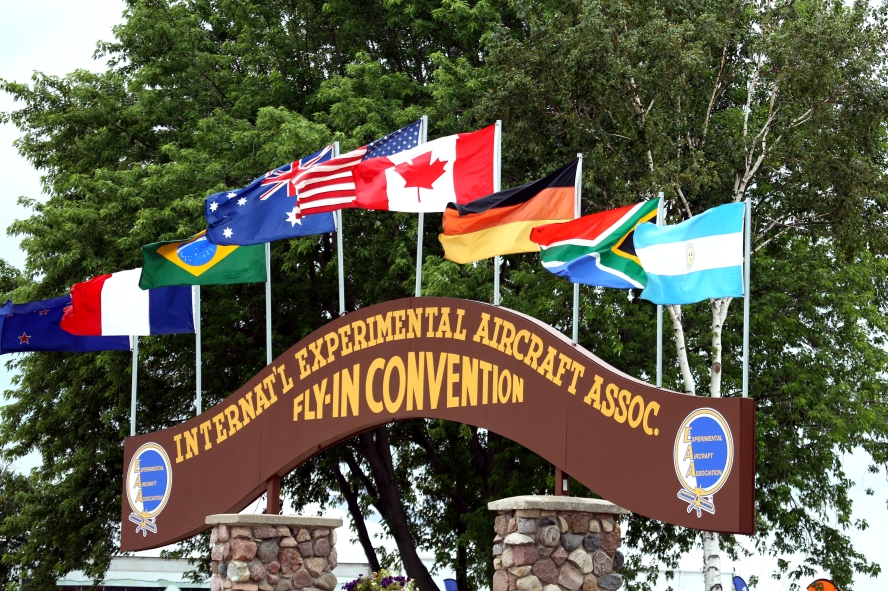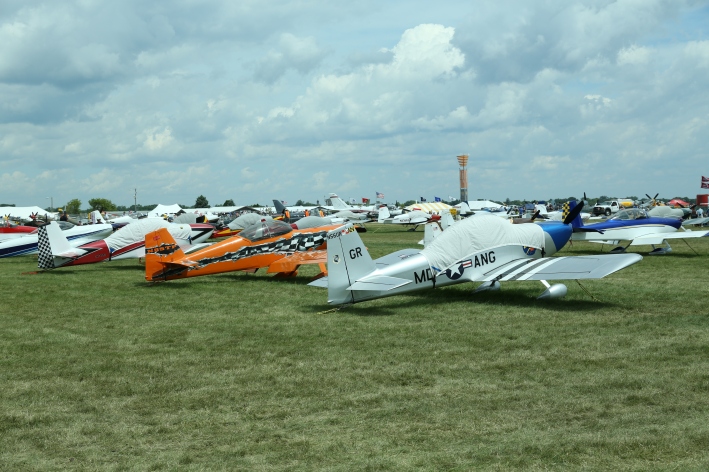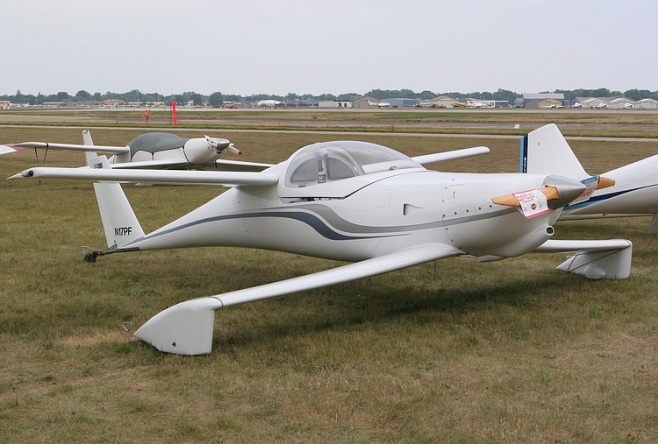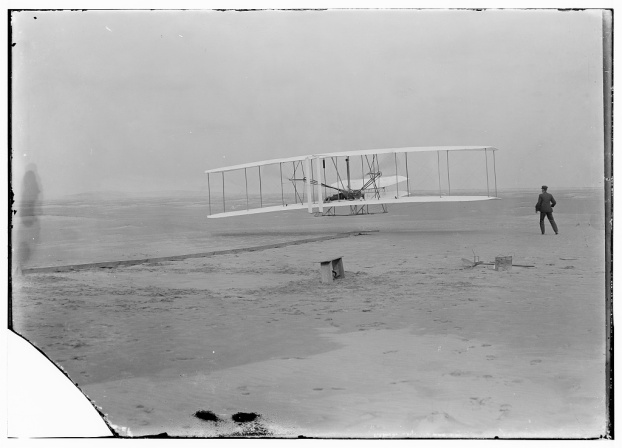We continued to look for a completed plane, project, or virgin Q2/Dragonfly kit off and on for about a year and a half after the Atlanta adventure. Lurking on the Q List for over a year made me pretty familiar with the builder’s map, and soon I had a pretty solid idea of where these things were located. Our weekly sweep of Barnstormers would occasionally return a listing for a project I’d been quietly keeping tabs on, but more often than not we wouldn’t find anything interesting.
We considered purchasing a project in Sacramento but deemed the journey too far. On top of the distance, the kit was on its fourth owner. Sadly, this seems to be the case more often than not with these little birds. Because they’re cheap and (somewhat) readily available, they get picked up by people that may not be very dedicated to the build. When the shine wears off and reality sets in, they get kicked down the road to the next owner; if there was one thing we wanted to avoid at all costs, it was a hodgepodge-built aircraft. We were already taking enough risks by choosing a squirrely kit that’d been orphaned in the 80s, and we weren’t looking to add more checkmarks in the ‘cons’ column.
When Reg Clarke’s beautiful Bird Xpresso came up for sale, we drooled over the fantasy but ultimately passed. The sticker price was too high, and Michael wasn’t crazy about the Subaru conversion if I recall correctly. A Dragonfly on the east coast caught our eye, but it’d suffered a prop strike with accompanying “minimal composite damage to the fuselage.” In the name of safety, we moved on.
Frankly, we pretty much stopped looking. By then, Michael was up to his eyeballs in graduate school and I was struggling to make ends meet while working on my nursing prerequisites. Another year passed. Soon, our desires for a build of our own got shoved into the “maybe someday” category. As we fell deeper into our studies, we mostly gave up on the idea.
____________________________________________________________
“I have something to show you,” Michael said to me over the rim of his Coke cup. With that, he pulled out his phone and slid it across the table to me. When I saw the Barnstormers logo on the top of the screen, I’ll admit I rolled my eyes. Hadn’t we agreed that this wasn’t a good time? We’d just bought a house, dumping most of our liquid assets into the down payment and a bathroom remodel in the process. Regardless, I snagged his Droid and read the ad.
Surprisingly, the Q2 listing staring up at me seemed promising. Single owner, kit was bought in ’83, 75hp RevMaster engine included, full instruments, and loads of paperwork to accompany it. All of the composite work was already completed, but that was either going to be really good or really bad. There was no listed asking price, either.
“Huh,” I responded. “Looks interesting.”
“Think so?” He asked. “In that case, look at the phone number.”
What? Weird request. (256)555-5555….
…256?
“Whoa, it’s in town!” I exclaimed. I wasn’t feigning surprise, either. After two and a half years of e-stalking, I thought I had a good idea where most of the in-progress Q2s were located. How did this one manage to elude us while sitting directly under our noses?
“It’s in Madison, actually,” he replied. “Although I can’t for the life of me figure out how it escaped us. I’ve got enough contacts at the local airports to have heard about a Q2 in the area by now.”
“He must not be an active pilot,” I guessed. Slowly, that excited feeling started to creep up on me again. “Give him a call! Do it do it!”
Michael dialed him up, and they spoke about the project for about twenty minutes. Everything I could make out from the muffled receiver noise sounded perfect. When he looked at me and raised an eyebrow, I immediately knew what Michael was about to ask and simply nodded before he could ask it.
“Well Jim…this is a bit of an odd question, but what are you doing tonight?”
There was a pause on the other end of the line.
“…Watching ‘Shipping Wars?'”
____________________________________________________________
All in all, we went to look at it on three separate occasions. Our fellow Q2-loving friend Dave gave us a large list of things to look out for and red flags to be aware of. Each trip, we focused on a section of his outline and compared notes over the phone. The only negative against it was the fact that it had been built for the RevMaster and not the O200. We decided we could deal with it in light of the good stuff.
The composite work was utterly immaculate. Jim had kept every piece of information, every letter, email, or correspondence, every receipt, and every scrap of paper that had anything to do with the plane. Everything was neatly bound in six D-ring binders along with the original plans. As he went, he’d color coded each page with highlighter: yellow for started, orange for finished, and blue for double-checked and signed off. He’d printed off every single issue of Q-Talk and arranged them by subject matter. There were hundreds of pictures of the build progress. He’d already installed 5 1/2 of the 6 builder mods we wanted to incorporate.
When he showed us a crisp laminated diagram of the wiring schematic, I knew it was coming home with us. This is what we’d been hoping to find for three years…a single owner project that had been exhaustively cared for and built with a strict attention to detail. And it had popped up less than twenty miles from our house.
At the end of the day, we probably paid a little more for it than we should have, but I don’t regret it at all. Jim offered to help us see the project through to completion, and that kind of assistance is worth more than money anyway. Confidence in the previous builder’s work instills a peace of mind that simply can’t be bought.
After three years of searching and slogging, we finally brought our Q2 home.
